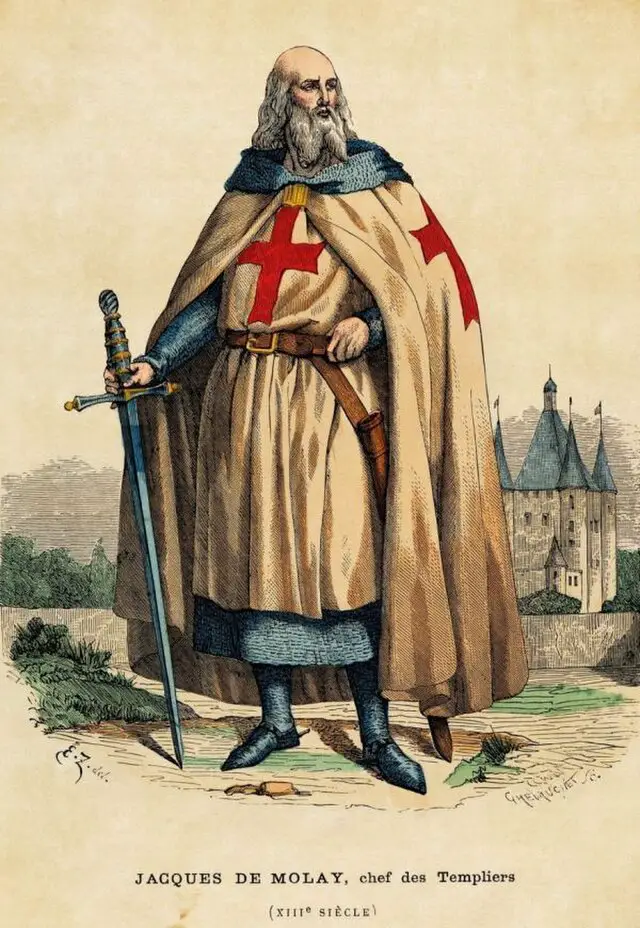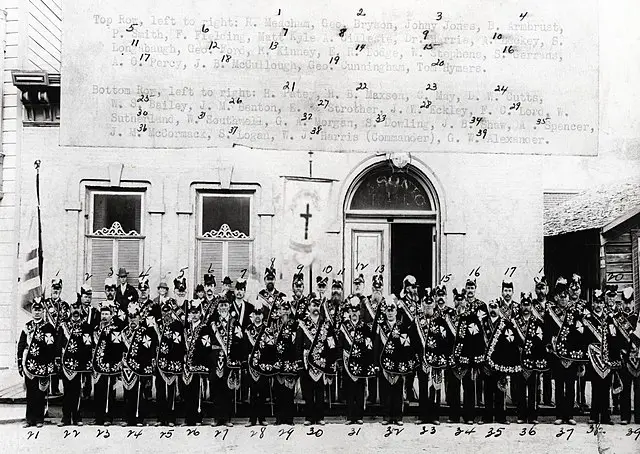Imagine a group of warrior monks, sworn to poverty, riding into battle with white cloaks and red crosses, amassing unimaginable wealth, guarding secrets, and possibly inventing the modern banking system. Then one day, they vanish. Not in the night, but in a blaze of arrests, confessions under torture, and fire. Welcome to the strange saga of the Knights Templar.
From Poor Knights to Power Players
The Knights Templar didn’t start out legendary. They began in 1119, just a ragtag bunch of knights who pledged to protect Christian pilgrims on their way to the Holy Land. They were officially known as the Poor Fellow-Soldiers of Christ and of the Temple of Solomon. Doesn’t exactly roll off the tongue.
But they had something better than good branding: purpose. And over time, that purpose grew. The Templars became one of the most powerful military orders in medieval Europe. They fought in the Crusades, fortified castles, and earned a reputation as elite warriors. And then something curious happened. They got really good at handling money.
Their rise mirrored the growing appetite of Europe for control of the Holy Land. As more Crusaders poured into the region, the Templars found themselves not only defending pilgrims, but building a vast logistical and military network that stretched from Jerusalem to London. They constructed fortresses, managed supply routes, and started becoming indispensable.

The Bankers of Christendom
People don’t usually associate armored knights with ledgers and receipts, but the Templars basically invented early forms of banking. A nobleman traveling to Jerusalem could deposit gold at a Templar temple in Paris and withdraw the equivalent in the Holy Land. No need to lug treasure across bandit-ridden roads.
They issued letters of credit. Managed estates. Lent money to kings. Sound familiar? It should. The Templars became so rich and widespread, they operated like an early international bank.
At their peak, they owned or controlled hundreds of estates across Europe. They collected taxes, managed farms, and offered protection services. Some kings even trusted them to store royal treasures. The Templars became a weird blend of monks, soldiers, landlords, and investment bankers.
And that made people nervous.
Kings, Debt, and Growing Resentment
Let’s talk about King Philip IV of France. By the early 1300s, he was drowning in debt. Wars, politics, and a tendency to overspend had drained his coffers. And guess who he owed? Yep. The Templars.
Philip wasn’t a man to grovel. He had a plan. If he couldn’t pay his debts, maybe he could just erase them, by erasing the Templars.
Meanwhile, the Templars were also in a bit of an identity crisis. The Crusader states had mostly fallen. Their reason for existing was fading. Some whispered they were arrogant. Others accused them of secrecy, of keeping relics and rituals locked away from the Church.
Friday the 13th: The Day the Hammer Fell
It was October 13, 1307, a Friday. On orders from King Philip IV, hundreds of Templars were arrested across France in a coordinated strike. The charges were bizarre: heresy, idol worship, black magic, spitting on crosses. Torture brought confessions. Or something that passed for them.
Pope Clement V, initially reluctant, eventually folded under pressure. He dissolved the order in 1312. Many Templars were imprisoned. Others disappeared. A few went to the stake.
Jacques de Molay, the last Grand Master, was burned alive in 1314 on an island in the Seine. As the flames rose, he supposedly cursed the king and the pope to meet him before God within the year. Both died shortly afterward. People started whispering.
Trial by Fire: Torture, Confessions, and Coverups
The trials weren’t fair by any stretch. Under duress, Templars confessed to obscene rituals. Kissing each other in strange places. Worshiping a severed head named Baphomet. Denying Christ.
Most historians now agree the confessions were nonsense. Coerced. Extracted in pain. But they worked. Public opinion turned. And more importantly, the Church got scared.
Philip seized their lands. Their money vanished into royal accounts. The Pope signed the paperwork. And just like that, the Templars were done. Not defeated in battle. Not brought down by enemies. Brought down by their own success.
Secrets, Treasures, and Legends
Here’s where it gets weird. Once the Templars were gone, rumors exploded. What happened to their treasure? Their secrets? Did they possess the Holy Grail? Or the Ark of the Covenant? Did they morph into the Freemasons? Are they hiding in plain sight?
No one ever found their massive treasure. Some say it was spirited away to Scotland. Others believe it’s buried under Rosslyn Chapel. Or in the New World. Or in coded documents that nobody can quite translate.
Whatever the truth, the lack of closure gave birth to centuries of fascination. The Templars became the go-to legend for every mystery with a cross and a sword. Dan Brown, anyone?
Templar symbols have popped up in the strangest places, from Masonic rituals to American dollar bills to video games. We project onto them whatever we fear or long for: secret wisdom, lost virtue, hidden power.
Legacy: What the Templars Left Behind
We forget sometimes that these weren’t mythological figures. They were men. Many were probably just doing their jobs. Fighting wars. Serving God. Balancing accounts.
But the institution they built left its mark. The Templars helped shape Western banking, diplomacy, and military logistics. Their fall taught powerful lessons about how quickly tides can turn—and how fragile even the mightiest orders are.
Maybe the biggest irony? For a group that tried to live simply and serve humbly, they became a symbol of everything they swore off: wealth, power, and secrecy.
Why It Still Matters
The Templars are more than just medieval cosplay. They represent something we keep seeing in history: what happens when faith, money, and power mix. They were men of God who turned into financiers, warriors who became symbols, idealists who were destroyed by politics.
Their story is about loyalty and betrayal, courage and corruption. About how institutions rise with a mission and fall under their own weight, or someone else’s sword.
And maybe, just maybe, it’s about how some stories never really die.
Sources:
1. Barber, Malcolm. The Trial of the Templars. Cambridge University Press.
2. National Geographic – Medieval History of the Knights Templar
3. History.com: Knights Templar

